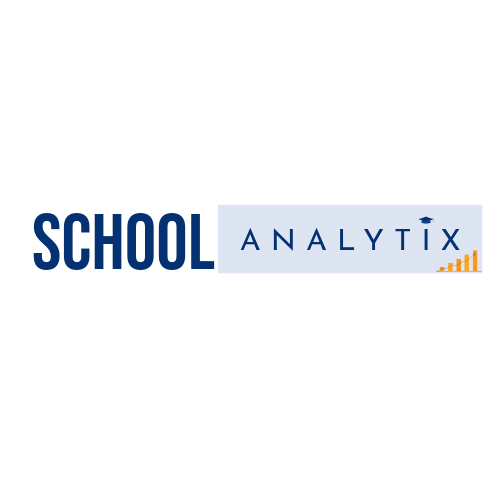Education is a cornerstone of society, and ensuring student success is a shared goal of educators, policymakers, and communities worldwide. However, understanding and addressing the diverse needs of students can be complex. Predictive analytics, a field leveraging data analysis and machine learning, has emerged as a powerful tool to anticipate student performance trends, identify at-risk individuals, and tailor interventions to support their success. In this article, we explore the transformative potential of predictive analytics in education, focusing on its application to student performance prediction.
Understanding Predictive Analytics in Education
Predictive analytics in education involves analyzing historical data, such as student demographics, academic records, attendance, and engagement metrics, to forecast future outcomes. By applying statistical models and machine learning algorithms to this data, educators can gain insights into student behavior, identify patterns, and make informed decisions to improve learning outcomes.
The predictive analytics process typically involves several key steps:
Data Collection: Gathering relevant data from various sources, including student information systems, learning management systems, assessments, and surveys.
Data Preprocessing: Cleaning, transforming, and organizing the data to ensure its quality and suitability for analysis. This may involve handling missing values, normalizing data, and encoding categorical variables.
Feature Selection: Identifying the most relevant features (e.g., demographic factors, academic performance indicators) that correlate with student outcomes and excluding irrelevant or redundant variables.
Model Training: Developing predictive models using machine learning techniques such as regression, classification, or clustering. These models learn from historical data to predict future student performance based on input features.
Model Evaluation: Assessing the performance of predictive models using evaluation metrics such as accuracy, precision, recall, and F1-score. Models are tested on unseen data to measure their effectiveness in predicting student outcomes.
Deployment and Monitoring: Deploying the predictive models in real-world educational settings and continuously monitoring their performance. Regular updates and recalibration may be necessary to adapt to changing student populations and environments.
Applications of Predictive Analytics in Education
Predictive analytics can be applied to various aspects of education to support student success and institutional effectiveness:
Early Warning Systems: Identifying students at risk of academic failure or dropout based on early warning signs such as attendance, grades, and behavior. Early intervention can then be implemented to provide additional support and resources to struggling students.
Personalized Learning: Tailoring instructional strategies, curriculum materials, and learning resources to meet individual student needs. Predictive analytics can help educators understand students’ learning styles, preferences, and proficiency levels to deliver targeted interventions.
Course Recommendations: Recommending courses, programs, or career pathways aligned with students’ interests, strengths, and goals. Predictive models can analyze past course enrollment patterns and academic performance to suggest relevant and beneficial educational pathways.
Resource Allocation: Optimizing resource allocation, including staffing, funding, and support services, to maximize student success. Predictive analytics can inform decisions about where to allocate resources based on anticipated student needs and outcomes.
Retention and Graduation Rates: Predicting student retention and graduation rates to identify factors influencing persistence and completion. Institutions can use this information to develop retention strategies, academic support programs, and student success initiatives.
Curriculum Design: Informing curriculum design and instructional practices based on data-driven insights into student learning behaviors and outcomes. Educators can adapt teaching methods, assessments, and course materials to enhance engagement and achievement.
Challenges and Considerations
While predictive analytics holds tremendous promise for improving student performance and educational outcomes, several challenges and considerations must be addressed:
Data Quality and Privacy: Ensuring the accuracy, reliability, and privacy of student data is paramount. Institutions must adhere to ethical guidelines and data protection regulations when collecting, storing, and analyzing sensitive information.
Interpretability and Bias: Understanding the factors driving predictive models and mitigating biases is essential. Transparent and interpretable models can help educators trust the predictions and make informed decisions to support all students equitably.
Human-Centric Approach: Recognizing the importance of human judgment, empathy, and expertise in the educational process. Predictive analytics should complement rather than replace the insights and intuition of educators, counselors, and administrators.
Continuous Improvement: Embracing a culture of continuous improvement and iteration in predictive modeling efforts. Models should be regularly evaluated, refined, and updated based on feedback, new data, and evolving educational practices.
Ethical Considerations: Addressing ethical dilemmas related to student profiling, algorithmic fairness, and unintended consequences of predictive analytics. Responsible use of data and algorithms requires thoughtful consideration of the potential impacts on individuals and communities.
Conclusion
Predictive analytics holds tremendous potential to revolutionize education by providing insights into student behavior, performance, and outcomes. By leveraging data-driven approaches, educators can identify at-risk students early, personalize learning experiences, and optimize resource allocation to support student success. However, realizing the full benefits of predictive analytics requires addressing challenges related to data quality, privacy, bias, and ethical considerations. With careful planning, collaboration, and ethical stewardship, predictive analytics can empower educators to unlock the full potential of every student and build a more equitable and inclusive educational system.
In this article, we’ve explored how predictive analytics can transform education by anticipating student performance trends and supporting interventions to enhance learning outcomes. From early warning systems to personalized learning experiences, the applications of predictive analytics in education are vast and varied. As educators and policymakers continue to harness the power of data-driven insights, we can pave the way for a more equitable, efficient, and effective educational landscape.
